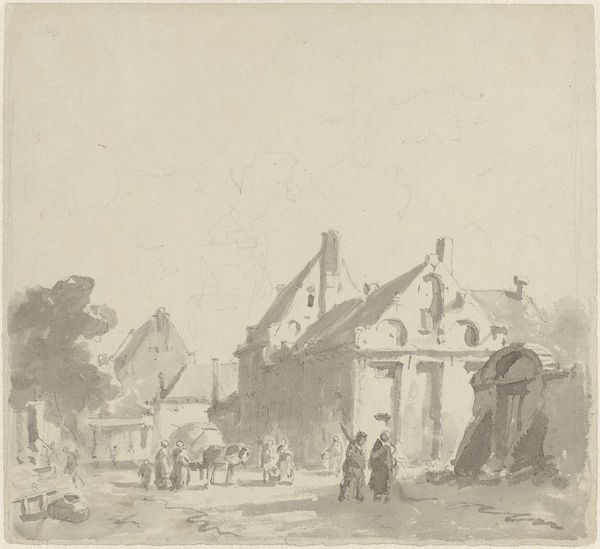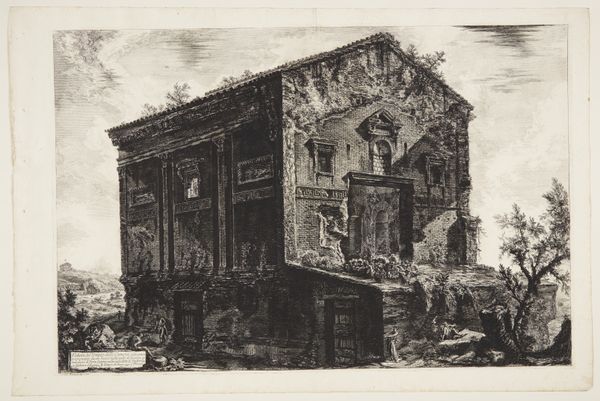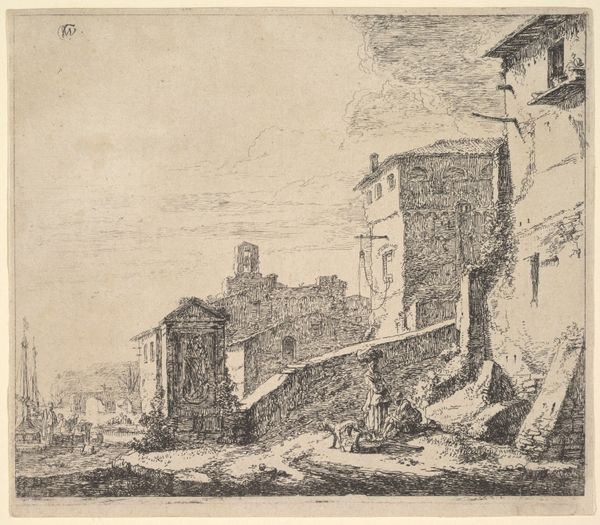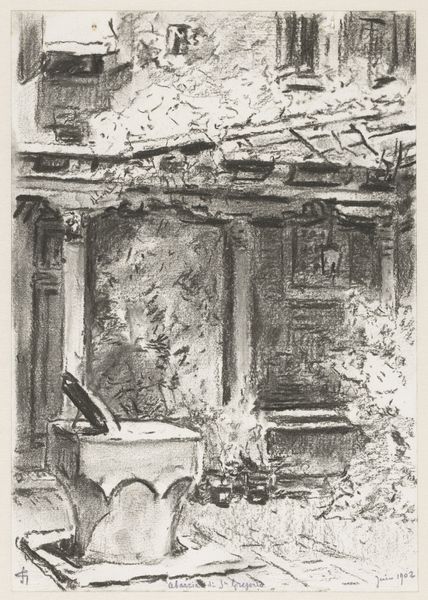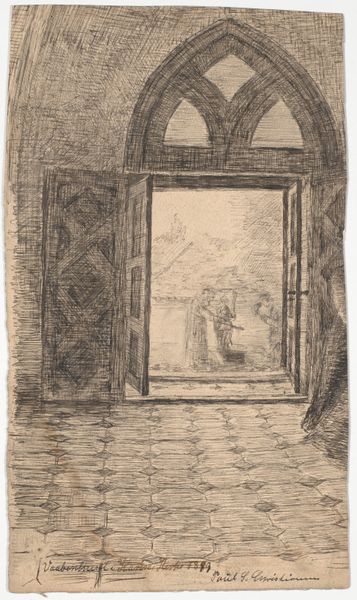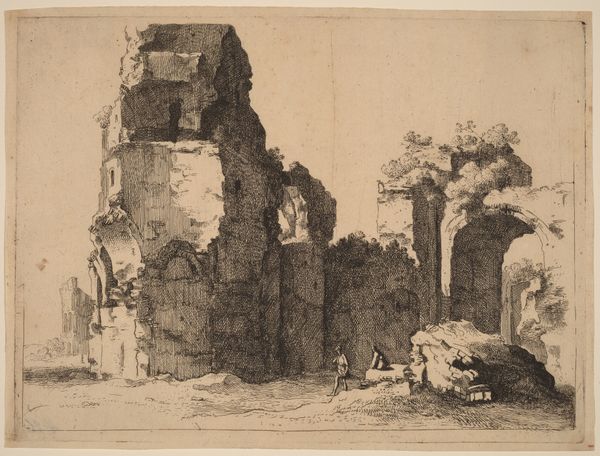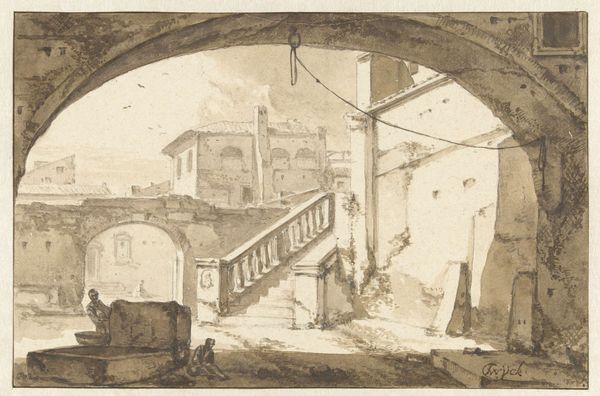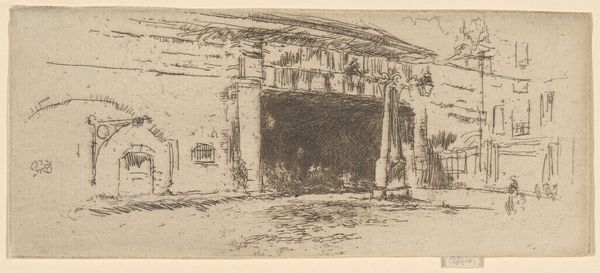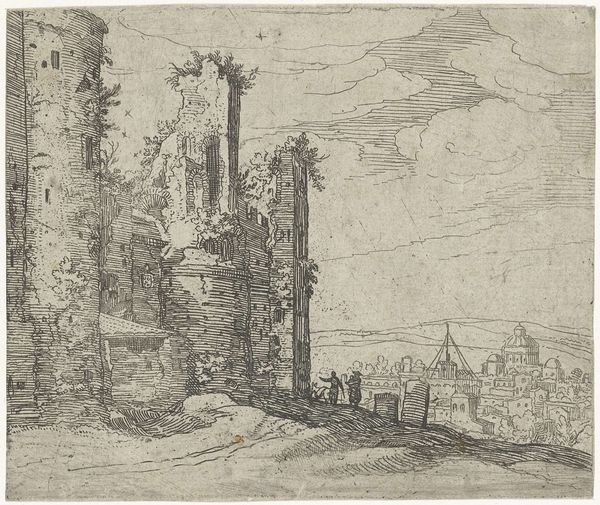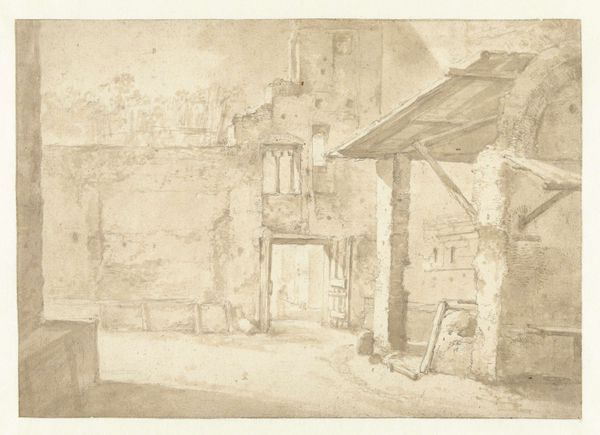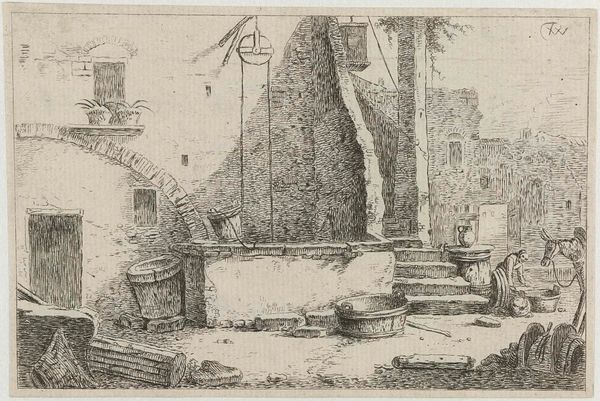
drawing, print, engraving, architecture
#
drawing
#
baroque
# print
#
landscape
#
figuration
#
pen-ink sketch
#
cityscape
#
history-painting
#
engraving
#
watercolor
#
architecture
#
realism
Dimensions: height 355 mm, width 299 mm
Copyright: Rijks Museum: Open Domain
Curator: This drawing, attributed to Jan Gerritsz van Bronckhorst and created sometime between 1613 and 1661, is titled "Boog van de geldwisselaars te Rome," which translates to "Arch of the Money Changers in Rome." It’s currently held here at the Rijksmuseum. Editor: It evokes a strong sense of ruin and decay. The composition emphasizes the crumbling architecture, with intricate details captured in monochrome. Curator: Bronckhorst, primarily working as a glass painter, probably encountered many other prints and drawings during his practice. I suspect this is not based on firsthand experience, but from second-hand visual encounters that would have circulated throughout artistic communities. Editor: The stark lines of the engraving emphasize the textures of the stone. The visible decay contributes significantly to the mood – you notice the eroded surfaces and fragmented details right away. Semiotically, it is the ruin as vanitas. Curator: Precisely. I see the decaying architecture of this “money-changers arch” as a powerful symbol. Money changers played a crucial role in enabling commerce in Rome. Representing the degradation of such a symbolic building becomes not merely an aesthetic observation but also reflects changing social and economic powers in Rome and Holland during this period. Editor: And yet, within this somber representation, the structural composition of the remaining structure intrigues me. The arch still conveys a sense of classical grandeur even in its diminished state. Observe the careful arrangement of light and shadow to create a powerful contrast. Curator: Notice also the labor required to create this intricate print – the drawing, the engraving – and compare it to the figures shown in the image itself. Bronckhorst draws figures small, and even comical, amidst the monumental labor required for its building. How is the artist depicting his contemporary context? Editor: Perhaps this portrayal acknowledges a human insignificance when pitted against enduring materials or even concepts. But I am fascinated that an artist still finds so much visual wealth in something that appears so materially "spent.” It seems this picture allows both the solid and the decaying to appear simultaneously. Curator: Ultimately, “Boog van de geldwisselaars te Rome" invites us to reflect on the relationships between the built environment, economic systems, and artistic production. Bronckhorst urges viewers to understand what work is being done in this image. Editor: Absolutely. Thank you for elaborating on these vital considerations.
Comments
No comments
Be the first to comment and join the conversation on the ultimate creative platform.

